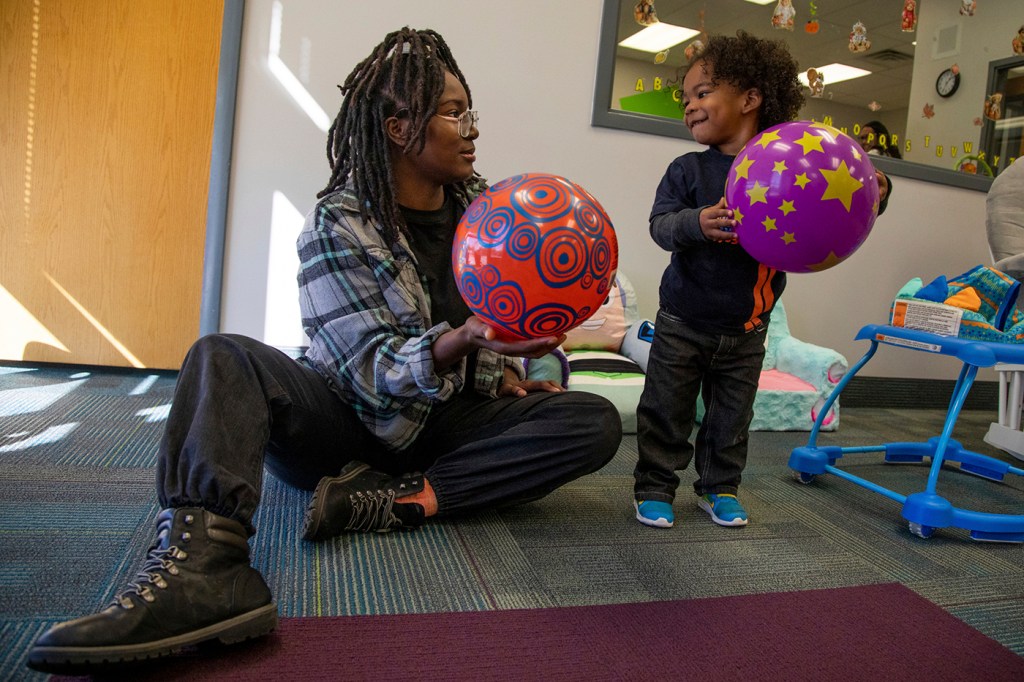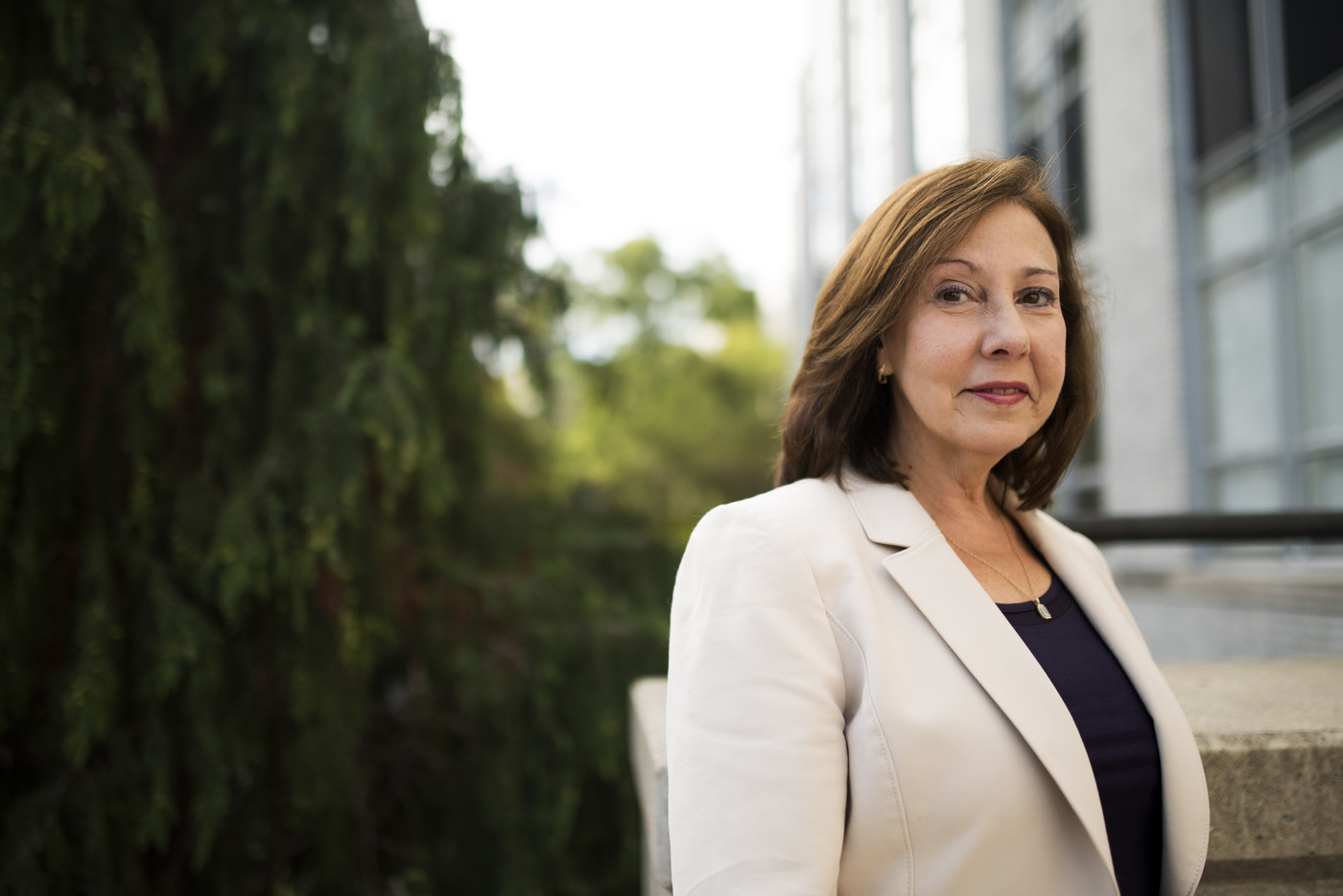What should families with children unvaccinated against COVID-19 do?

In the United States, just shy of half of all adults are fully vaccinated against COVID-19, and an additional 7.6 percent are at least partially vaccinated—a considerable feat, given the relatively short time (about six months) that inoculations have been widely available. However, the figures leave out an important demographic: So far, the federal Food and Drug Administration has not authorized any vaccine for children under 12 years old.
Vaccine manufacturers including Pfizer and Moderna are in the process of conducting trials among younger children, but in the meantime, what should parents do? What about families in which some children are eligible for the vaccine and others aren’t?

Laurie Kramer is a professor of applied psychology in the Bouvé College of Health Sciences at Northeastern University. Photo by Adam Glanzman/Northeastern University
“Families are experiencing a lot of turmoil and uncertainty right now,” says Laurie Kramer, professor of applied psychology at Northeastern. There’s no single answer that will make sense for every family, she says, but across the board, the situation does offer opportunities to open up conversations between parents and children about frustrations, fears, hopes, and accomplishments.
According to the CDC, there are several practices that can help protect unvaccinated children. First, ensure that everyone who can get a vaccine, does. Second, make sure that children aged 2 and over wear masks in public settings. And third, for children under 2, or who can’t wear a mask, limit visits with people who are not vaccinated or whose vaccination status is unknown.
Kramer, who studies family and sibling dynamics in the Bouvé College of Health Sciences, has some additional advice for parents and families.
Parents of young children are facing tough decisions right now. Do you have any advice for how they might navigate those choices?
First, I think it’s important to be clear that there is no single answer as every family needs to make decisions about risk tolerance based on what makes sense for them.
Families are under a lot of stress right now, and one thing that does seem to help is that it’s summer, and there are lots of opportunities to be outside [where the chance of spreading or contracting COVID-19 is significantly lower, according to public health officials]. It also seems that we’ve been at this for so long that young children are much more amenable than I might have expected to wearing masks in public in general. So that’s all good.
Otherwise, this is a great learning moment for families. There are opportunities that parents have to talk to their children about how to deal with frustration and disappointment—we all had hoped that this would be the summer that we’d be free of COVID-19, and of course, that’s not quite the case, yet.
This situation opens up opportunities for parents to commend their children on how patient they are, and to help them see that despite the emotions they might be feeling—disappointment, frustration, sadness—they’re still managing well.
Being able to understand emotions and manage them are transferable skills that kids can use in situations throughout their entire lives. Parents can acknowledge the strengths that children have been developing in building coping skills, which are absolutely critical skills.
As a researcher of siblings and sibling dynamics, do you have any suggestions for families in which some children are eligible for a vaccine and others aren’t?
In general, when you have children of different ages, it’s normal to have different expectations of individual children, but a child’s understanding of why those differences are occurring is important.
In some families, children over 12 who are vaccinated can move about more freely than their younger siblings, who might feel that they’re getting the short end of the stick.
What’s important is for parents to encourage kids how to talk about these times when they feel they’re being treated differently and how they feel about that. Teaching kids how to appropriately talk about their emotions is incredibly powerful—these are skills that will serve them well in all sorts of relationships. And further, helping kids think about what makes a situation fair or not is also very important.
In Boston, children will still be wearing masks when they return to school in the fall, and that’s probably a little bit of a disappointment for them. I’d encourage family conversations about these issues—whenever parents can talk with kids about the reasons behind these decisions, it helps.
Helping kids to think about what makes a situation “fair” or not is also very helpful. My work with adolescents suggests that kids often understand that fairness is about meeting each child’s unique needs. They know that equal treatment is not always fair treatment. And in this case, they may understand that their parents are working hard to make sure each of their children (vaccinated or not) are safe and healthy. It’s helpful to encourage children to explain their understanding of what’s happening, and to talk about what “fairness” means to them.
Are there other things parents and families might do to have fun and mitigate risk this summer (given, as you mentioned, that risk tolerance is a highly individual decision)?
There’s no doubt that parents are in a very difficult situation right now, and it might help to talk to their children’s pediatrician or seek out other expert help as they try to navigate these decisions. Of course I would encourage families to seek out testing and follow the CDC guidelines as best they can.
There are other ways to connect with friends and family either by Zoom or video chats, or outside where the risk of spread is lower, or perhaps by creating a “pod” with other families in similar situations in which you all agree ahead of time on the boundaries of your individual exposure outside the pod.
And children themselves may have some creative ideas about things the family can do together.
Good coping and resilience can come from having open conversations about all the dimensions of this experience. If parents can help kids feel that it’s OK to talk about these issues, and they’re able to listen to their children as they express their concerns, frustrations, and desires, that sets the stage for resilience and good communication moving forward.
From a psychological perspective, I believe it’s important to think things through in terms of the immediate and long-term risks and benefits—and in the long run, what do parents want their kids to take away from this experience? What memories do parents want their kids to have?
For media inquiries, please contact Shannon Nargi at s.nargi@northeastern.edu or 617-373-5718.





